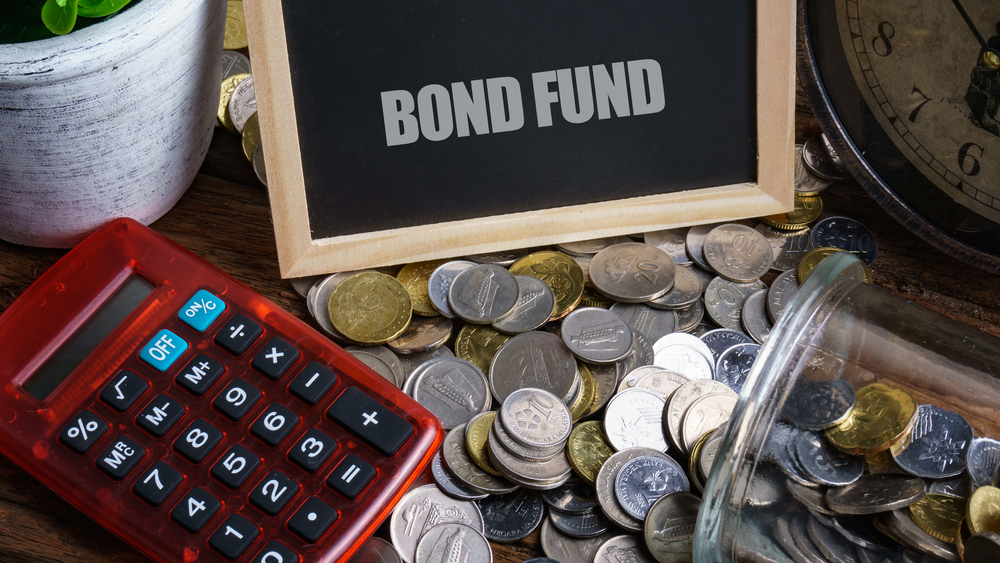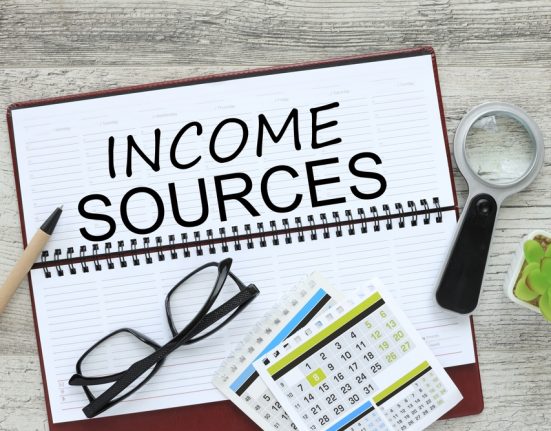The new era of higher interest rates has reignited a long-smoldering Wall Street debate: Is it better for ordinary investors to buy individual bonds outright? Or shares of bond mutual funds?
During the yearslong period of near-zero interest rates, the answer seemed simple: Funds had low fees and were easy to buy and sell, and share values rose alongside bond prices. If any one bond defaulted, losses were minimal.
The historic declines suffered by major bond funds last year highlighted the risks of that approach. Rising rates crushed funds’ share prices. That is because bond prices drop when new higher-yielding bonds come on the market and make older, lower-yielding bonds less attractive. Because funds’ share values are based on the market price of their bonds, someone who bought shares a few years ago could end up cashing out today with less money than they put in.
Many these days are considering buying individual bonds instead and holding them to maturity to lock in today’s higher rates. But those come with their own downsides. Here’s Wall Street’s latest thinking on how to decide between bonds or funds:
Protecting your capital
Bond investors often share a sentiment credited to Mark Twain, that the return of their money is more important than the return on their money. For that reason, many prefer buying individual bonds and holding them until they mature. That way, it doesn’t matter what happens to the price of the bond in the meantime—investors can lock in today’s rate and generally expect to get back what they put in.
A bond is effectively an investor lending money to the federal, state or local government, or a company. The borrower makes interest payments, usually in twice-yearly fixed amounts, until the time the issuer pays back the principal. Investors can buy corporate or municipal bonds through an online brokerage account. Treasurys are also available through brokers or online from the government through TreasuryDirect.
The risk of buying them a la carte comes from concentration. If a company runs into trouble and defaults on its debt, bondholders can suffer steep losses. Even local governments, generally safe, sometimes miss interest payments. Funds, in contrast, mitigate that threat. They hold thousands of bonds at the same time, so the occasional default isn’t that big a deal. But the price of those funds rises and falls with rates—and getting your principal back requires selling the fund.
Consider how an investor who put $10,000 in California municipal bond mutual funds in March 2022 would fare relative to someone who bought $10,000 worth of one-year California state bonds on sale that month with a yield of 0.94%.
The bondholder would get back his $10,000 plus payments of $47 at the six-month and one-year marks, netting perhaps $84 after brokerage costs. Had the investor instead put his $10,000 into a California muni mutual fund on the bond sale date of March 17, 2022, and pulled it out on the bond maturity date of April 1, 2023, he would likely have done worse.
Thornburg’s LTCAX, a limited-term California muni fund, would have returned 0.1% counting price changes and dividend payments, or $10 for the investor, according to FactSet. A longer-term California muni fund like Capital Funds’ TEFEX, would have lost him $163 according to FactSet.
Leslie Falconio, head of taxable fixed-income strategy, Americas, at UBS, said clients who previously invested in bond funds are showing new interest in buying bonds outright.
“We’re definitely seeing more of that today than we did when we had a 2% 10-year yield,” Falconio said.
But bond and fund returns look more similar over multiyear periods, which is how long you should be investing in bonds for anyway, advisers say. And going forward, rising rates will increase gains for bond and fund investors alike, as managers buy more freshly issued, higher-yielding bonds.
That disappointed investor who was down $163 in March, a year after investing $10,000 in TEFEX is down even more today, about $413. But the fund now projects an annual yield of 4%. If rising rates don’t push bond prices down a lot further, that gain would more or less wipe out the investor’s losses by next Thanksgiving.
Bonds require more effort
Buying individual bonds is a lot of work. New York state resident Jonathan Kahn estimates he spends a total of five hours a week researching and managing his municipal-bond portfolio, browsing available bonds several times a day for five to 10 minutes at a time. To understand repayment plans, he reads the legal prospectuses on the public Electronic Municipal Market Access website.
After a bond purchase, bondholders will want to continue keeping tabs on the companies or governments they are invested in. S&P Global’s rating on the bonds of Hawaii’s government utility company, for example, dropped from investment-grade to junk following the summer’s deadly Maui wildfire.
There is enough additional complexity that many people choose to hire a financial adviser, a choice that in some cases can pay for itself. Bondholders will need to reinvest the interest and principal money when it comes in. Often people buy “ladders” of bonds that mature sequentially over a series of years—and must also reinvest the proceeds of each year’s maturing bond. Even buying a 30-year bond doesn’t guarantee 30 years of interest payments because many borrowers retain the right to repay their bonds early if borrowing costs drop. Investors buying a bond need to see if it is “callable,” no matter the length of time until maturity.
Bondholders who find themselves needing to cash out before maturity lose the protection-of-capital benefit. They’ll also pay additional brokerage costs and could well end up with crummy prices selling a handful of bonds in a market that favors bulk trades. Prices can drop if borrowers run into financial trouble, too, just because investors are concerned about default.
“Everyone thinks they’re a buy-and-hold investor until prices fall 20%,” said Matt Fabian, a partner at bond research firm Municipal Market Analytics.
Funds are easy to trade
Funds are much easier to buy and sell, especially in small quantities. That makes them a far more popular investment than individual bonds. About half of U.S. households own stock or bond mutual funds, most of them in retirement accounts, according to the Investment Company Institute. Families that hold bonds outright make up only 1% of the total and 5% of those with top incomes, according to the federal Survey of Consumer Finances.
Investors can buy shares of mutual or exchange-traded funds online through a range of money managers. Mutual funds typically set minimum buy-in prices at a few thousand dollars, sometimes less. Investors can buy into an ETF for as little as the price of a single share—often less than $100.
Mutual-fund investors have opportunities to cash out daily in an amount equivalent to the estimated end-of-day price of the underlying bonds. ETF holders can sell shares any time at their trading price.
That doesn’t always work in the funds’ favor. In the early weeks of the pandemic, investors yanked billions from funds. To pay them, mutual-fund managers had to sell bonds at unappealing prices, which in turn pushed prices down further. Some ETF share prices fell even further than the prices of the bonds they held. (Meanwhile, some individual bondholders got bargains.) Advisers generally recommend holding bond funds for at least a few years—and not selling out of panic.
Coupon vs. yield
Bonds on sale on the open market will have a price, a coupon and a yield. The coupon tells you the set amount of interest that you will receive annually, in twice-a-year payments. But that is not the same as the return on your investment. The yield factors in the price you paid for the bond to determine the actual return you are getting. Investment firms offer calculators to help figure out the yield.
Mutual fund and ETF holders, on the other hand, receive a yield in the form of monthly dividend payments. The amount of those payments can vary from month to month depending on rates, prices and the performance of the fund.
Diversity lowers risk
Bond fund investors are effectively holding the debt of hundreds of different borrowers so the consequences of a few defaults or downgrades are negligible. Some taxable bond funds mix corporate bonds with Treasurys and bonds sold by other countries, giving investors even more diversification. Investors can also choose between funds geared toward bonds maturing in just a few years and those with further off payouts and generally higher interest rates.
That variety means investors might be comfortable holding lower-quality debt that throws off more income. VWEAX, a Vanguard-managed corporate mutual fund focused on high-yield corporate bonds, returned 5.67% for the year ended Oct. 31, according to FactSet. That compares with 2.45% for VFICX,which invests in higher-grade government and corporate bonds.
Even higher-grade funds can get a boost from a small share of lower-level investment-grade debt—securities that bondholders would likely be unwilling to buy outright. TEFEX, the Capital Funds California fund, is 8% BBB-rated debt, likely part of the reason when the fund outperforms ultrasafe California state bonds.
Pro management
Bonds tend to be ultrasafe. About one-tenth of 1% of muni bonds default annually, according to Municipal Market Analytics. The debt of companies and financially shaky towns may have a higher risk of deteriorating over time, and mutual funds employ analysts to look out for warning signs.
Big asset managers also say they get better prices because of their longstanding relationships with trading desks and their ability to buy in bulk. Indeed, municipal trade data shows many new issue bonds are scooped up in large quantities, elbowing out individual investors.
Some municipalities like New York City try to give individuals a leg up by giving them first priority during bond sales. But investors say it is often difficult to purchase newly issued bonds.
Professional management can be expensive, but it can also be cheap. Passively managed funds tend to cost less and often perform better after fees. Some big mutual funds charge as little as 0.05%. Some big ETFs charge as little as 0.03%. Smaller investors or those looking for a specific product may pay a bit more. The Vanguard California fund, VCITX, charges 0.17% unless investors have $50,000 or more to invest, in which case they pay only 0.09%.
Considering some tax issues
Investors in debt sold by state and local governments—whether in bonds or funds—earn interest exempt from federal income taxes. In many cases, they can also avoid state income taxes in the state where the bonds are issued. That means a 4% yield can be worth 5% to 6% or more to someone in a high tax bracket. Investment firm websites offer calculators to help you determine a bond’s taxable-equivalent yield.
But residents of small states might have few, if any, in-state muni mutual funds to choose from and might find it easier to curate state-specific portfolios by buying bonds outright. U.S. Treasury debt is taxable at the federal level, but exempt from state taxes.
Bondholders also have the flexibility to sell individual bonds that have lost value to lower their tax bill by offsetting gains on other investments, a technique known as “tax-loss harvesting.” And bonds held to maturity don’t incur capital-gains taxes if they are not bought at a discount to their original par value. That is a big if though—you can even end up paying income taxes on munis if you’re not careful.
A little of each
For those who can’t choose, Wall Street offers hybrid products. Some exchange-traded funds are designed to mature on a set date. Some managers offer individually managed bond portfolios known as “separately managed accounts,” usually to investors willing to put up at least $200,000 to $500,000, or more. But the overhead can be steep, as much as 0.65%, and anyone cashing out may end up with the same crummy prices an individual would.
Whether investors choose to buy bonds, fund shares or anything in between, advisers say, much of their gains will come from interest payments. That means for someone investing in bonds today, how they choose to do it might matter less than when they are making the choice: a time when rates are at decade-plus highs.








